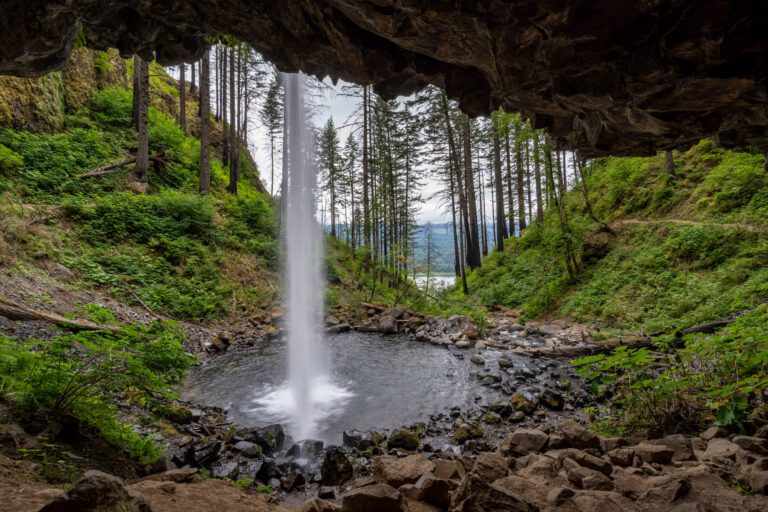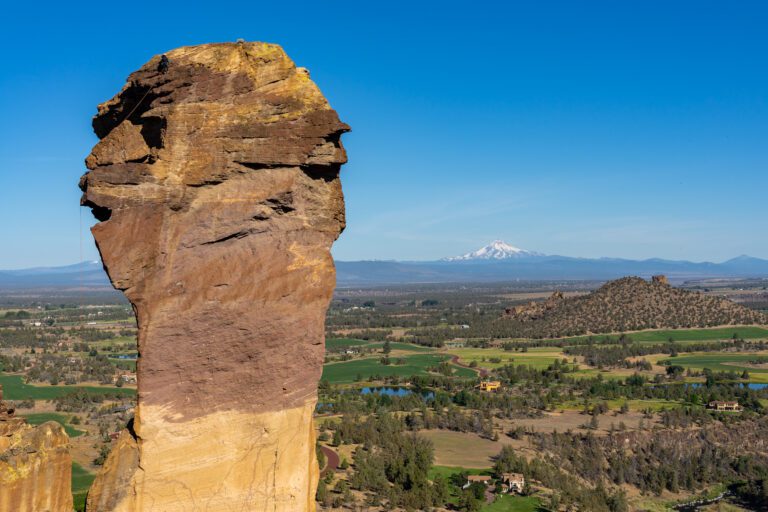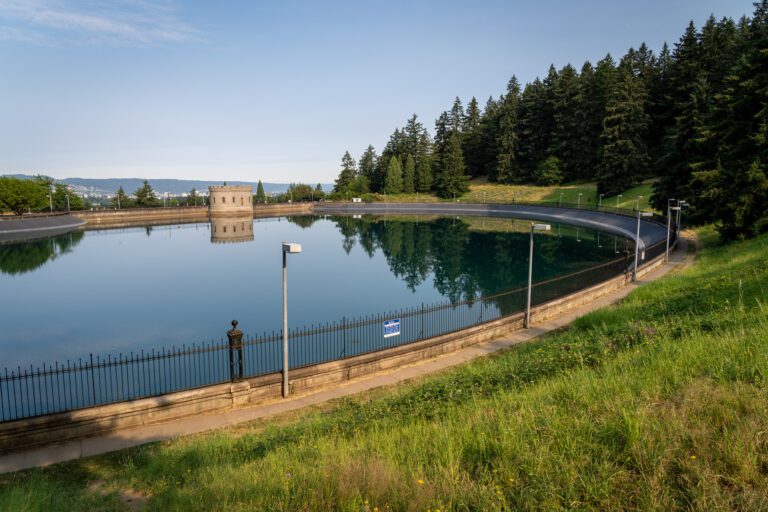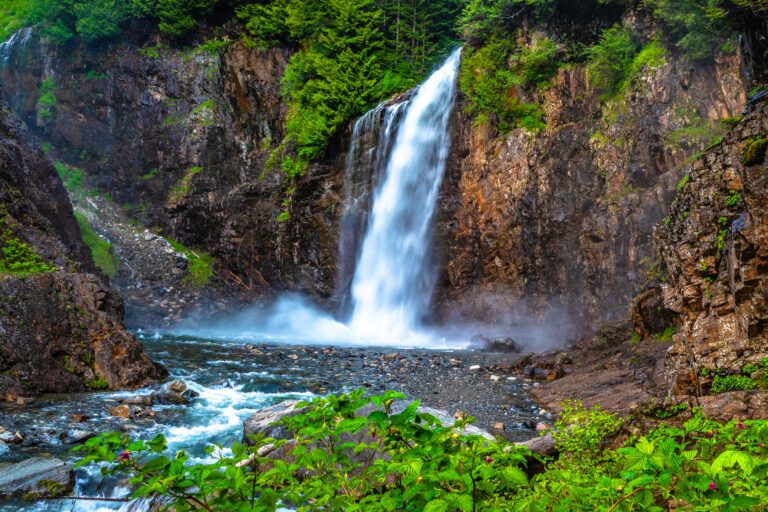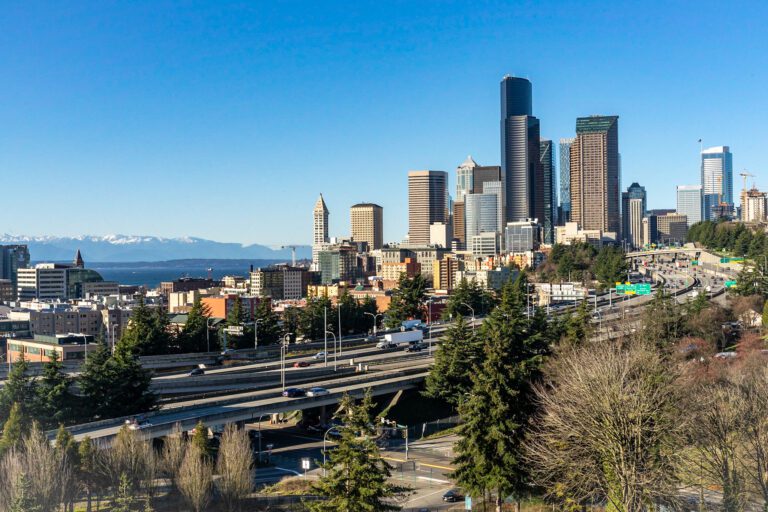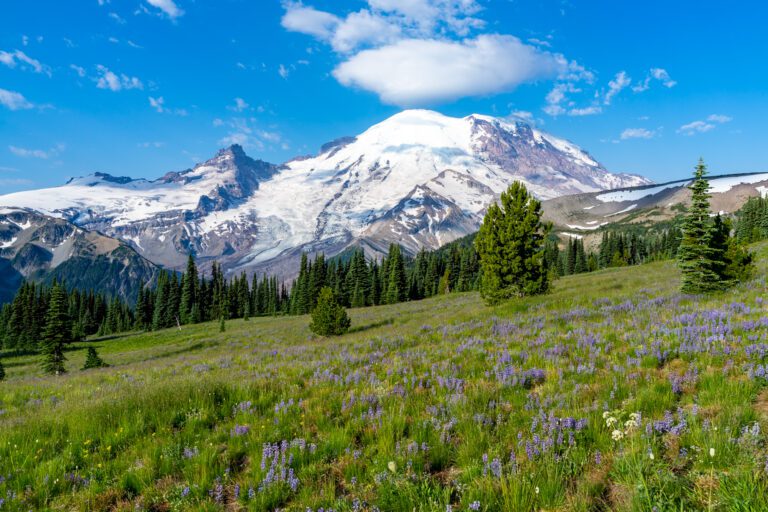The Best of Forest Park in Portland, Oregon: Complete Guide
Portland has been my home since I was two. And, like most things that you’ve grown up with, you tend to take “normal” things for granted. I have a very clear memory of flying back into PDX after visiting my brother in Brooklyn that shook this up.
The wheels touched down, the landing door opened, and as I walked onto the jet bridge the smell hit me—it was fresh, green, and alive. The city just smells like trees. It smells like green (if that’s even a thing). It was instantly calming, welcoming, and invigorating.
It was something I’ve always known was here, but it took leaving and coming home to realize it.
There’s a good reason for all this “forest fragrance” as well. Portland (and the whole Pacific Northwest) is covered in trees! But what catches the eye of most newcomers on the western half of the city is the massive wall of greenery stretching miles across the landscape.
This is Forest Park—Portland’s playground and one of the largest urban forests in the country. Featuring over 70 miles of trails and towering fir trees just minutes away from downtown, we just had to dedicate an entire post to this distinctive forest in the city.
While I’ve never actually tracked it, I think I’ve hiked at least 80% of these trails, exploring these woods since I was a young. Today I live in the St. Johns neighborhood in North Portland which has the most convenient (and picturesque) access to the parks right across the iconic St. Johns Bridge. I frequently pop over the bridge for hikes by myself, with friends, or with my son (which often turn into a leisurely examination of moss, leaves, and sticks).
In this guide, I’ll give you a short history of the park, a rundown of the trail system, and offer my suggestions for the best day hikes no matter where you are in the city or what you’re looking for.

Disclaimer: Some of the links in this post, like hotel and vacation rental links, are affiliate links, meaning at no additional cost to you we make a little bit of money if you click through and book. That being said, we would absolutely never recommend something to you that we don’t stand behind 100%.
A Brief History of Forest Park
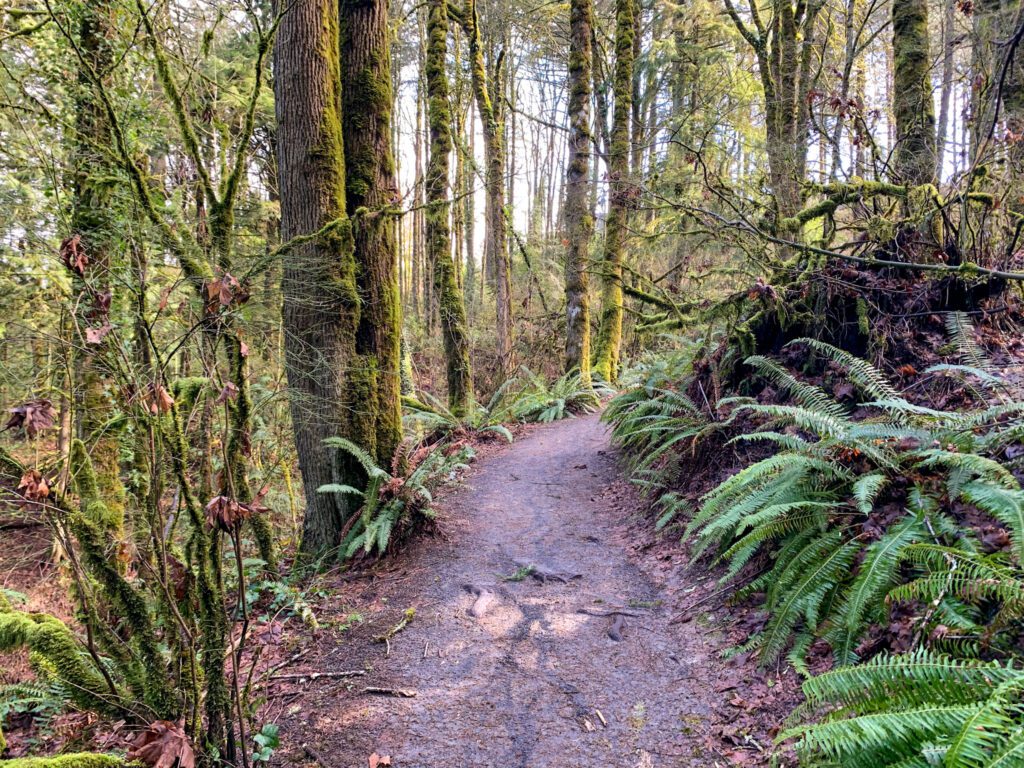
Forest Park came into existence in 1948, though the brainseed of it started in 1903 when the Olmsted Brothers (sons of the famed Central Park architect) were hired by the city to envision the future of Portland’s parks. The brothers proposed the vast nature preserve of Forest Park along with Sellwood Park, Mt. Tabor, and Rocky Butte among others.
The forest itself is a part of the Tualatin Mountains (often referred to as the “west hills” by locals) and has long been used by Native Americans. During the mid 1800’s when European settlers were descending upon the northwest en masse, developers started to log the area to make way for residential development.
Luckily the steep slopes and loose ground proved too unstable and the land remained forested with Douglas Fir trees, western hemlock, and western red cedar. The city then acquired acreage bit by bit from donations, acquisitions, and delinquent tax foreclosures until 1948 when the park was officially dedicated with 4,200 of its present-day 5,100 acres secured.
As Portland has become more well known in pop-culture thanks to shows like Portlandia and Grimm, so do some of the city’s most recognizable areas. Forest Park in Portland has featured prominently in books, TV shows, and movies over the last decade.
Colin Meloy (lead singer of the band The Decemberists) wrote the very popular Wildwood children’s book series based in Forest Park (that’s now in the works to become a stop-motion movie by local Laika Studios). The recent movies Leave No Trace and Pig (love me some Nic Cage!) both feature Forest Park prominently. So what’s the big allure of this gigantic urban forest anyway? Let’s take a look at all this park has to offer.
Looking to explore Portland? We have plenty of other Portland travel guides (written by a Portland local) to help you discover something new and exciting.
- The Best Things to Do in Portland: A Complete Portland City Guide
- How to Spend One Amazing Day in Portland
- How to Spend a Weekend in Portland (Complete 3 Day Itinerary)
- Where to Stay in Portland, Oregon: A Complete Guide to 8 Neighborhoods
- The Best Time to Visit Portland, Oregon (According to a Local)
- The 13 Best Hikes Near Portland, Oregon: Complete Portland Hiking Guide
- 16 Amazing Day Trips from Portland, Oregon
- 12 Perfect Weekend Getaways from Portland, Oregon
- The Best Parks in Portland: A Local’s Take on Portland’s Parks
What to Do in Forest Park: A Local’s Complete Guide
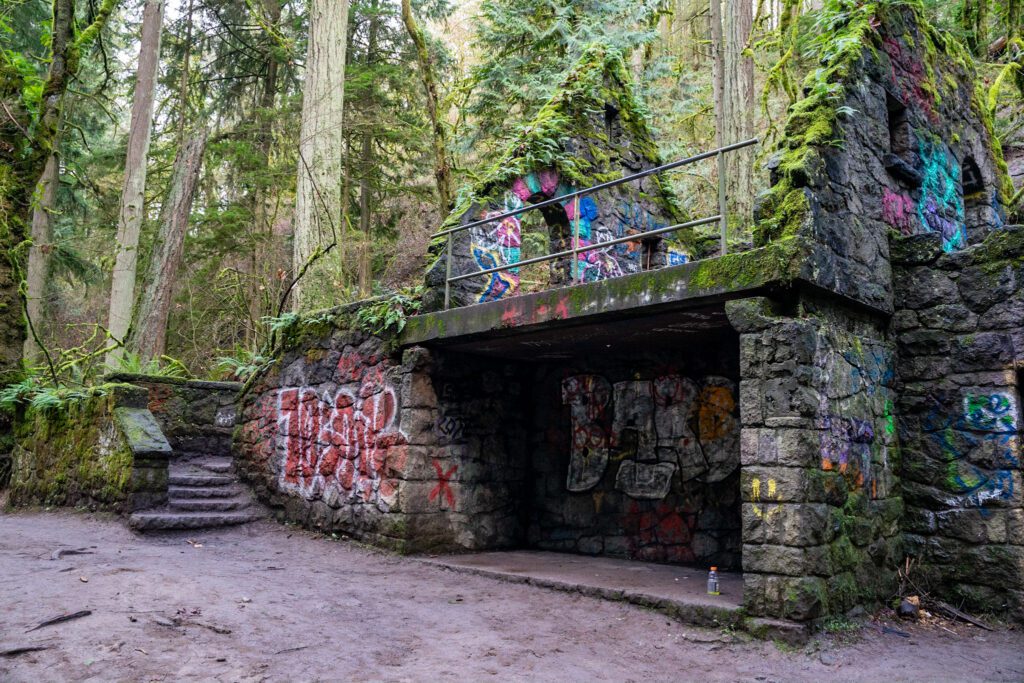
What to Know Before You Go:
- There are no real “hard” hikes in the park, which is a good or bad thing depending on your needs. There are plenty of difficult hikes on Mount Hood or in the Columbia River Gorge that you can get to in an hour, but the real draw of Forest Park is that it’s RIGHT THERE!
- There are a few maps floating around, but this is the best one you’ll find. Because the park covers so much ground, a good way to stay oriented is to familiarize yourself with the two main thru-hiking trails, Wildwood and Leif Erickson (which actually only runs about ⅔ of the way). These two run the length of the park and almost all the other trails run perpendicular to them. This makes almost any Forest Park excursion infinitely customizable due to the numerous interlocking trails. If you read about one below that is either showing too low or too high mileage, pull it up on the map and you can easily shave off or add length.
- Dogs are welcome but must be leashed.
- The park is open from 5:00 am to 10:00 pm—no overnight camping allowed (but would you really want to?).
- Follow basic hiking etiquette especially on the busier trails. Be aware of who’s around you including joggers or bikers who will need to pass. Don’t hike with both earbuds in blasting music!
- If your trailhead is in the Northwest District, you may need to pay for parking, especially if you’re starting around Washington Park.
- Lastly, lock your car and don’t leave any valuables at trailheads as petty theft from car break-ins is sadly not uncommon.
The Best of Forest Park
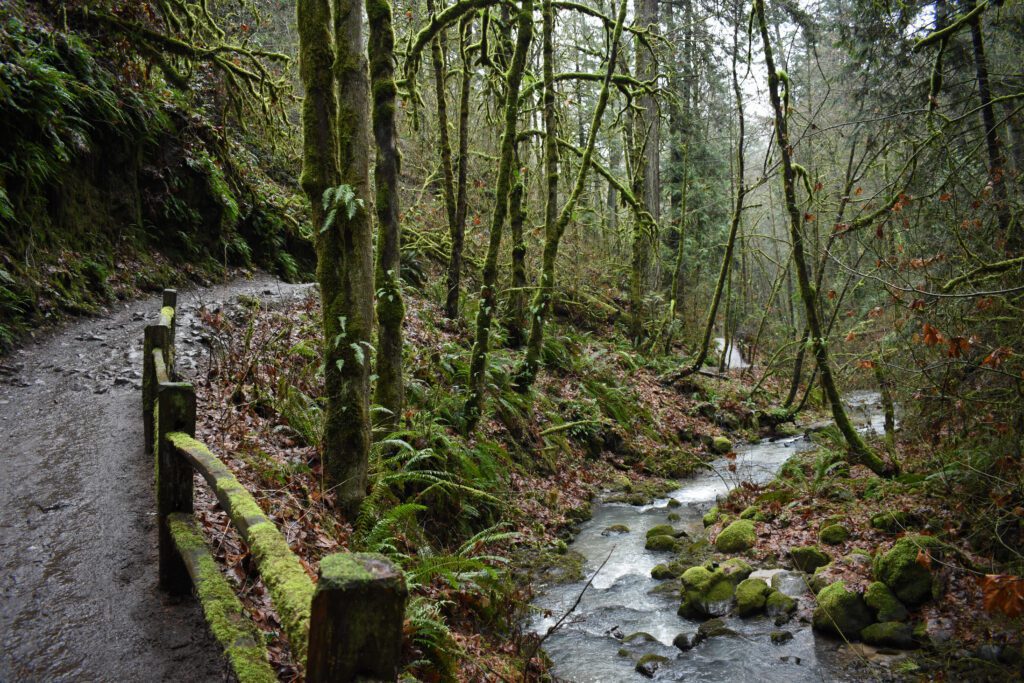
Best for Runners:
- Leif Erikson: Big and wide and mostly flat for on-again, off-again runners like me who can’t really take hills.
- Wildwood: The entire trail is well graded and marked, but wear sturdy shoes and watch your feet so you don’t roll an ankle.
Best for Bikers:
- Leif Erikson: One of the best options for bikers! It’s not super rocky terrain, but you will need a mountain bike. Many of the fire lanes can also be used by bikes, but aren’t as well maintained.
- Springville Road: A steep, wider road that’s rockier than Leif Erikson. The handy thing about this road is it cuts right through the park and connects Skyline Blvd with the St. Helens Hwy for those hardy enough to give it a go!
Best for Kids:
- Lower Macleay to the Witch’s Castle: Kids love it. Adults do too. From the trailhead to the Witch’s Castle is only about a half mile which makes it pretty doable for any age (and for parents who need to provide a shoulder ride). For older kids, keep going up to the Audubon Society to see the birdies before heading back down for a total of 3.2 miles round trip. Alternatively, you can drive up Cornel Road and park at the Audubon Society and hike around those trails too.
- The Big Stump: The linked hike is 4.9 miles which is doable for bigger kids, but you can easily cut this down by hanging a left on Hardesty trail and still seeing the “big stump” (which is big, but probably not as impressive to those of us over the age of five), making the total loop only 2-ish miles.
Best for Misanthropes / Avoiding Crowds:
- Linnton Loop: I can’t guarantee you won’t see people, but there are far fewer than the trails closer into town. And it’s lovely!
- BPA/Newton Road Loop: Basically the farther north you go, the fewer people you’ll see. Even when I didn’t live in north Portland I’d find myself on these trails so I didn’t have to fight for parking and so I could enjoy the solitude of the forest. This loop clocks in at 8 miles, but starting at either the BPA Road trailhead or Newton Road, you can throw together nice loops from around 3-ish miles.
- Burlington Loop: This one’s not “technically” in Forest Park, but is sooo darn close it might as well be. This is an easy 3.2 mile loop that can easily be extended. Plus, you’ll pass under the famous troll bridge on McNamee Road on your way to the trailhead!
The Best Trails in Forest Park
Lower Macleay Park to Pittock Mansion
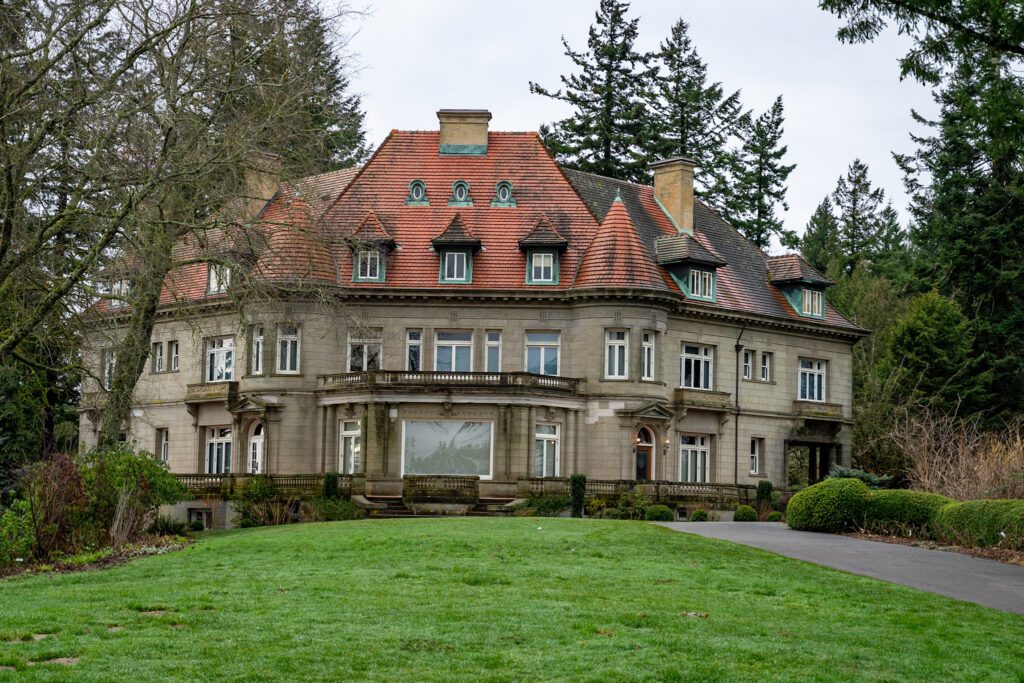
I’ll start with what’s probably the most popular hike in Forest Park in Portland. I don’t have numbers to back this up, but I’ve probably done it at least 20 times, and there are always people on it.
If you’re wanting a bit more solitude, hit this one up on a weekday or when it’s raining.
This 5 mile out and back starts at Lower Macleay Park (you can take a city bus pretty much right to it), and hikes up along Balch Creek where you can often spot local trout.
You’ll soon pass the “Witch’s Castle” (which is actually an old restroom), and keep climbing till you hit Cornell Road. Cross here or take a pit stop in the Audubon Society to see some spectacular birds (my personal favorite is Julio the owl).
Continue climbing up to Pittock Mansion for incredible views of the city and the Cascade Range before making your way back down the same way you came.
The Ridge Trail
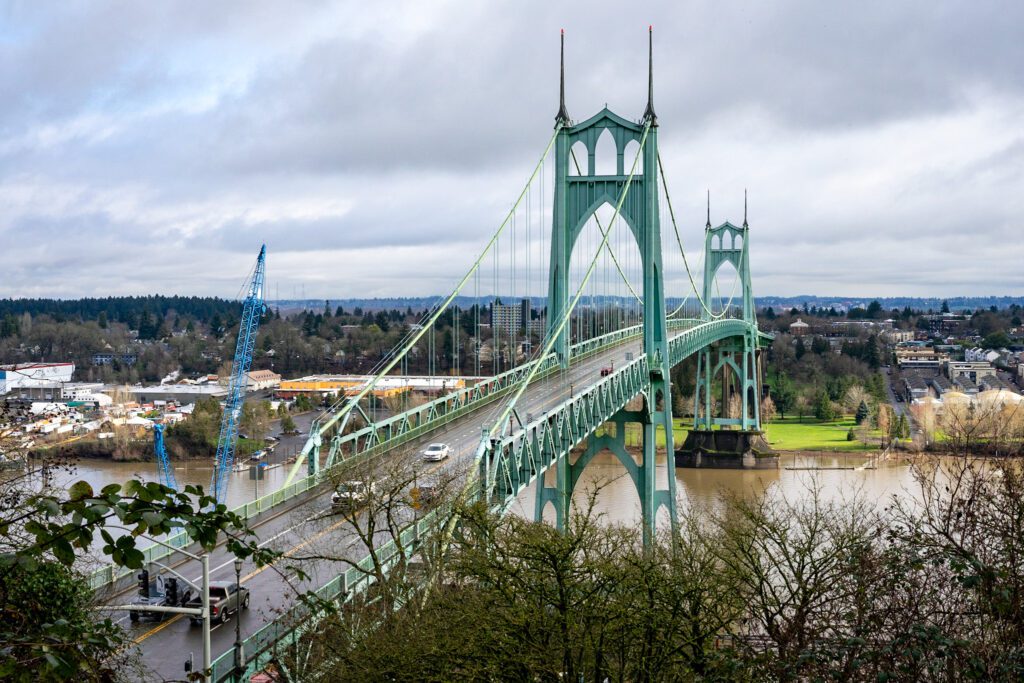
Although this is a standard out-and-back trail, I like the Ridge Trail for three reasons. One: it’s never too crowded. Two: you get decent elevation gain for the park (just over 850 feet, but it’s all in the first half). And three: you get the best view of the St. Johns Bridge just about a quarter mile in! And you can have lunch in St. Johns afterwards (so I guess that’s really four reasons).
Hike to Skyline Tavern
You won’t find this in any official guidebook; this is a Diana special! Start at the Ridge trail, hook a right on Leif Erikson, then a left up Waterline. It’s roughly three miles up and three back down. Keep the map handy and you can switch things up by taking Wildwood or Tolinda trail.
I can think of few better ways to spend a sunny afternoon than hiking to an incredible neighborhood bar.
Skyline Tavern has a killer outdoor seating area complete with dogs, a fire pit, horseshoes, ping-pong, and frequent live music. Heads up: they don’t open until noon and they don’t allow minors.
The Wildwood Trail
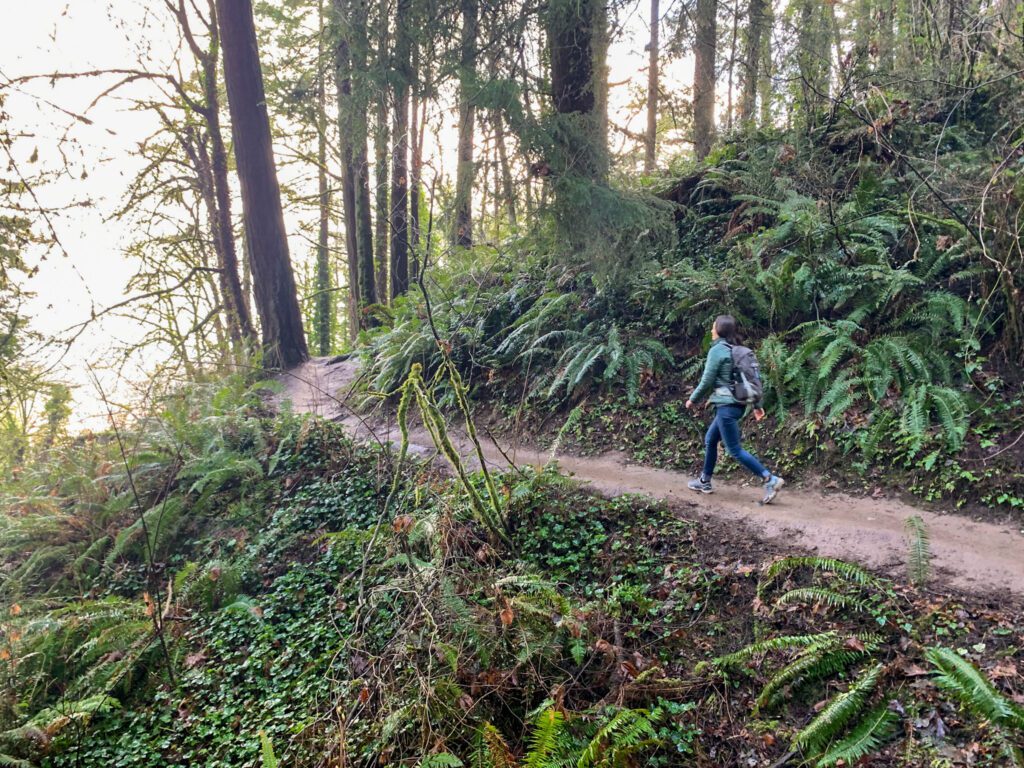
Forest Park is just over 8 miles in length, between one and two miles wide depending on where you are, and the Wildwood Trail wends its way from one end to the other for 30.2 meandering miles.
It’s also the only National Recreation Trail in the park, a designation intended to highlight natural resources and the top trails across the country.
I set out to do the entire trail one rainy day with my friend Brendan, but we only made it a mere 26 miles due to some trail closures (that I was secretly happy about). Instead, we ended our trek early at the Skyline Tavern for sausages and beer.
The trail takes you past the big sites of the Hoyt Arboretum in Washington Park and Pittock Mansion, and pops you out on NW Newberry Road where you’ll either need someone to pick you up or to have done a car drop (though the trail can be done in either direction).
Some ultra-marathoners like to run the whole thing, but they’re obviously crazy, right?
Wildwood/Leif Erikson Loop
This trail is a great option for joggers (and as a half-hearted jogger myself, I can personally recommend this loop for not being too challenging). The trailhead will get a bit busy on the weekends, but because most people run this loop, the parking spaces turn over pretty fast. You can often just double park and wait less than ten minutes to find someone leaving.
There’s not a ton of elevation gain and the whole trail is under a canopy of trees to keep you cool even on a hotter day.
Maple/Wildwood Loop
This 8.4 mile loop starts at Saltzman road which is one of my favorite trailheads. It’s often less crowded, has lots of options for trails to take once you park, and it gets you into the center of the park on some of the lesser-used trails.
This is a nice and more secluded hike than others only a couple miles closer to downtown and like the name suggested, you’ll see tons of bigleaf maples. If you ask me, it’s worth the few extra minutes of drive time to reduce the foot traffic you’ll encounter.
Linnton Loop Hike
I love this trail and not just because it’s close to my house. Even on a nice Saturday it’s never super busy, but there is very limited parking at the trailhead (like maybe six or seven cars at most).
The hike starts off running parallel to a stream and gives you some nice elevation gain for the first mile and half before leveling off when it turns onto Wildwood.
Completing the loop can be a little tricky to navigate as you have to walk down a residential road and find a set of stairs that takes you down to the final stretch of the trail.
Hoyt Arboretum Hike
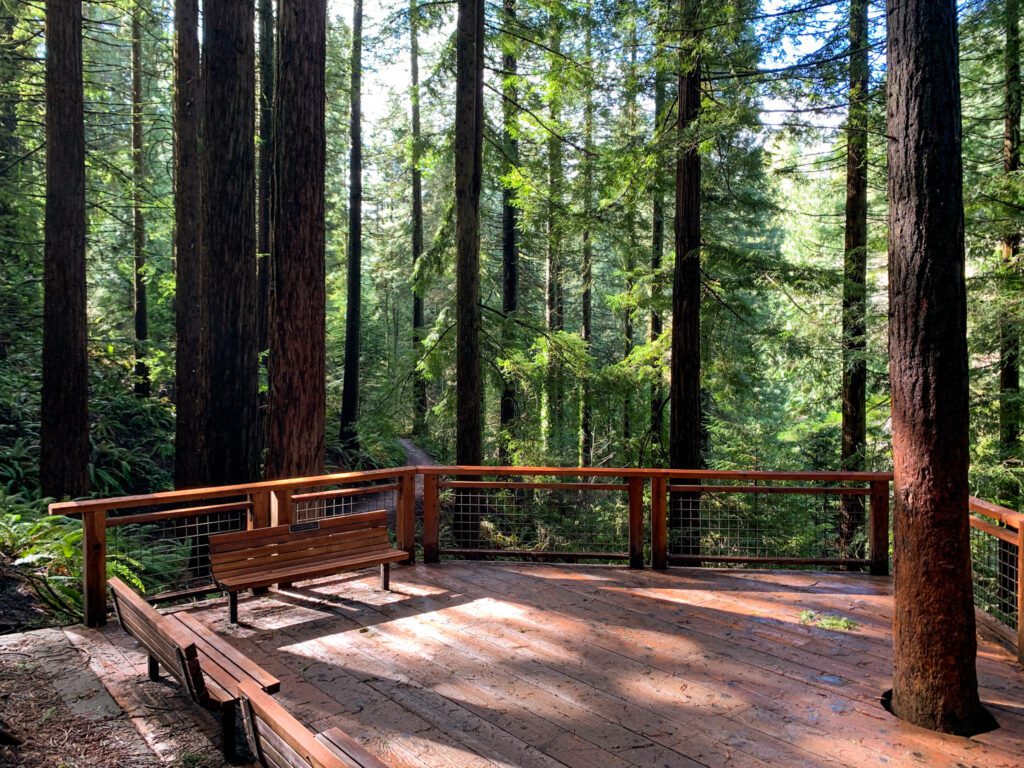
Technically in Washington Park, but the two parks butt together and are connected via the Wildwood Trail so I kept it in!
This 4.7 mile loop is one of my favorites to bring visiting friends to. There’s not a lot of elevation gain and this trail is best done at a leisurely pace so you can stop and read about the trees you’re passing.
My favorite section of this hike is the Redwood Trail that takes you to an incredible observation deck where you’ll stand in awe of the 150 foot trees around you.
They’re only about 90 years old, having started out as little saplings in a Portland nursery back in the late 1920’s before they were transplanted into the arboretum in 1931. What I wouldn’t give to revisit them in another 90 years!
The whole area is worth exploring, and here’s a great map to keep you on track.
Leif Erikson Drive
This is a wide, 10.3 mile long service road that’s a favorite destination for bikers and runners. Many hiking loops will use a portion of this route, though it’s more of a “walk in the woods” than a hike due to its width and relatively level terrain (and it’s a little boring compared to every other trail).
Leif Erikson stretches most of the length of the park running parallel to Wildwood, but it intersects with Germantown Road and many cyclists incorporate this section of trail with a longer city ride using Germantown and Hwy 30.
It’s come to a point in my Forest Park explorations that I can really just jump in any old place and tromp around for an hour or two before finding my way back out.
And honestly, with the exception of a few particularly scenic hikes, most of the park looks the same so one route is just as good as another. This is a great way to include a hike into your day no matter where in the city you are.
MORE TO EXPLORE IN THE PACIFIC NORTHWEST
If you’re planning a trip to the Pacific Northwest, we’ve got you covered with all sorts of super detailed travel guides to our favorite places in Washington and Oregon.
- Seattle: Find the perfect place to stay in Seattle, use our itinerary and complete Seattle city guide to plan your weekend in Seattle (we also have a guide to one day in Seattle for shorter trips), find a new hike near Seattle to tackle, and plan your next day trip or weekend getaway.
- Portland: Get a local’s take on what to do in Portland and where to stay in Portland, plan your weekend itinerary (we also have a guide to one day in Portland for shorter trips), find the best hikes in and around Portland, and discover the best day trip and weekend getaway destinations.
- Road Trips: Explore the best of the Pacific Northwest on a 14 day Pacific Northwest road trip. Plan an amazing Washington road trip or Oregon road trip with our detailed guides, including a couple of itineraries that you can copy/paste.
- The Oregon Coast: Explore the best of the Oregon Coast on a 7 day Oregon Coast road trip. Discover the best hikes on the Oregon Coast, and figure out what to do in Cannon Beach and Astoria.
- Hiking in Oregon: Get a local’s take on the best hikes in Oregon, the most spectacular Oregon waterfalls, and dive deeper into each region with our guides to the best hikes at Mt. Hood, in the Columbia River Gorge, and more.
- Hiking in Washington: Add to your Washington hiking bucket list with our guide to the best hikes in Washington. Then dive into our regional hiking guides to discover the best hikes near Seattle, hiking at Mount Rainier, in Olympic National Park, in the North Cascades, and at Mount Baker.
- Mount Rainier National Park: Plan the perfect trip to Mount Rainier with our guides to the best things to do, the best hikes, and how to plan a perfect day trip to Rainier.
- Olympic National Park: Explore the best that Olympic National Park has to offer – the best hikes, a complete itinerary, and exactly where to stay in Olympic National Park.
- North Cascades National Park: The least visited of the National Parks in Washington, learn how to plan a perfect itinerary, and figure out the best hikes to add to your list.
- Crater Lake National Park: Discover the best that Oregon’s only national park (isn’t that crazy?) has to offer with our guide to planning your Crater Lake itinerary, and our guide to the best hikes in Crater Lake. Plus, a guide to planning an amazing Seattle to Crater Lake road trip.

